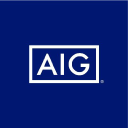AIG Mid Year Review: Earnings & Investment Income In Focus
AIG‘s (NYSE:AIG) stock is down about 6% year-to-date (YTD) following mixed first and second quarter results. In the first half of 2016, the company’s top line declined by over 16% year-over-year (y-o-y) owing to a 13% decline in P&C revenue and 70% decline in corporate income. Total realized investment gains, reported as an adjustment figure in the financial results, declined by 104% y-o-y to a loss of $64 million in the first six months of the year. 
 The insurer posted net income of $1.7 billion in H1 2016 compared to almost $4.3 billion in the same period last year. The company’s bottom line was influenced by declines in earnings from market-sensitive assets and a $455 million after-tax net loss of reserve discount on workers’ compensation reserves in the second quarter.
The insurer posted net income of $1.7 billion in H1 2016 compared to almost $4.3 billion in the same period last year. The company’s bottom line was influenced by declines in earnings from market-sensitive assets and a $455 million after-tax net loss of reserve discount on workers’ compensation reserves in the second quarter.

Net Realized Capital Gains
- American International Group Stock Up 7% Over Last Year, What’s Next?
- American International Group Stock Is Up 9% YTD, What’s Next?
- Up 14% In The Last Twelve Months, What To Expect From American International Group Stock In Q4?
- Up 9% In The Last One Month, Where Is American International Group Stock Headed?
- American International Group Stock Is Undervalued
- American International Group’s Stock Is Trading Below Its Intrinsic Value
AIG’s net realized capital gains declined from $1.5 billion in H1 2015 to a loss of $64 million in H1 2016 on account of a 243% decline in sales of fixed maturity securities (on account of falling bond yields) and a 274% decline in foreign exchange transactions. This is a major point of concern because AIG is expected to generate about 37% of its revenues from investments in the global markets in 2016, totaling over $21 billion.  Post-Brexit, the yield on the 10-year U.S. treasury note fell below 1.5% for the first time since 2012, yields on U.K. benchmark government bonds fell below 1% for the first time on record and 10-year government bond yields in Germany ended below 0%. Other developed economies such as France, Sweden, Switzerland and Japan all touched all-time lows. The risk of persistent lower interest rates will definitely impact AIG’s investment income, considering fixed maturity securities, mortgage loans, hedge funds and re-investments contributed almost 98% of AIG’s net investment income in the last three years.
Post-Brexit, the yield on the 10-year U.S. treasury note fell below 1.5% for the first time since 2012, yields on U.K. benchmark government bonds fell below 1% for the first time on record and 10-year government bond yields in Germany ended below 0%. Other developed economies such as France, Sweden, Switzerland and Japan all touched all-time lows. The risk of persistent lower interest rates will definitely impact AIG’s investment income, considering fixed maturity securities, mortgage loans, hedge funds and re-investments contributed almost 98% of AIG’s net investment income in the last three years. 
The fall in investment yields is likely to have a considerable impact on AIG’s valuation, considering that investments contribute over 60% of the company’s valuation, per our estimates. We expect AIG’s Life and Retirement investment yield to rise to about 5.6% by the end of our forecast period. Owing to persistent low interest rates and falling government bond yields, there could be a downside of about 10% to the company’s valuation if its Life and Retirement investment yield rises to only 4.5%.
Please refer to our complete analysis for AIG here.
Global Large Cap | U.S. Mid & Small Cap | European Large & Mid Cap |More Trefis Research
